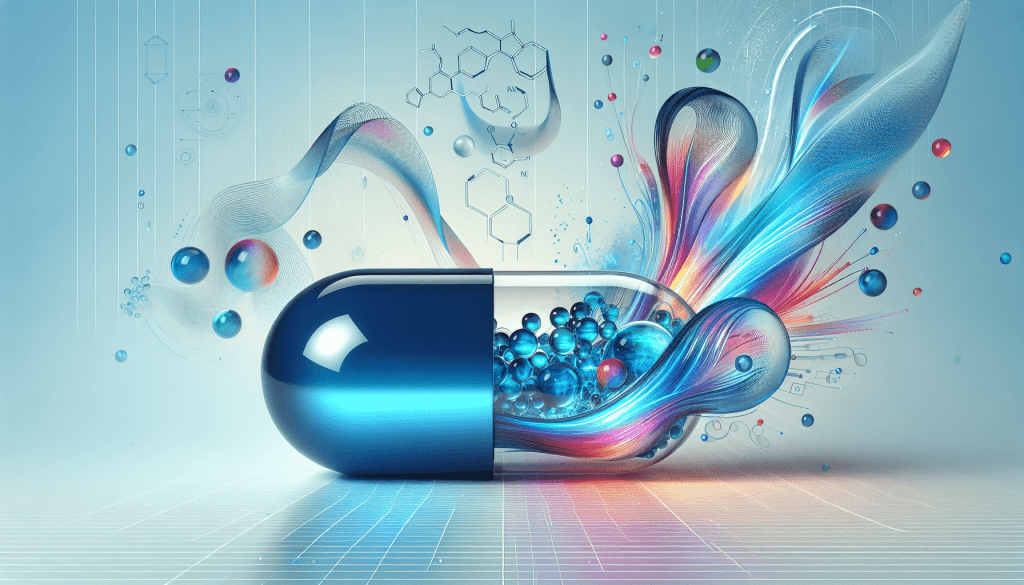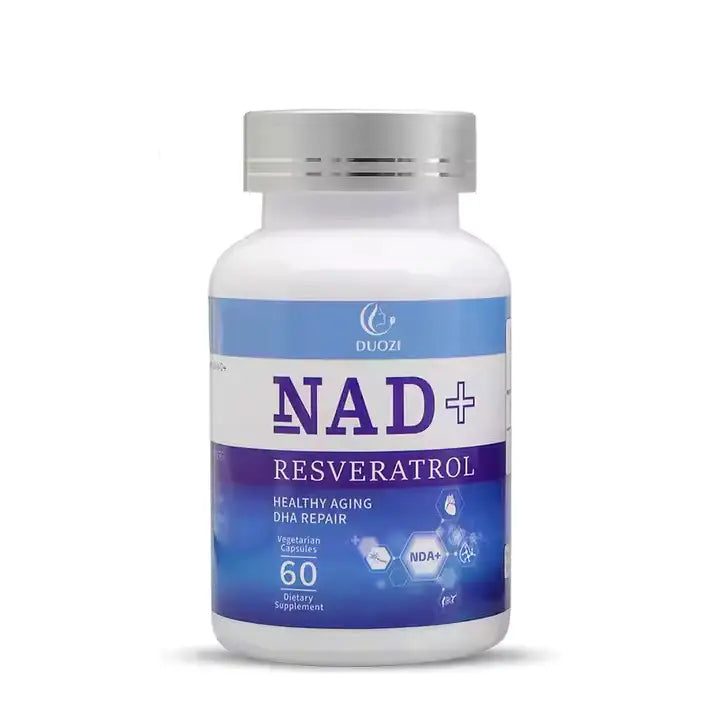In “How NAD Enhances Athletic Performance,” you’ll discover the incredible ways Nicotinamide Adenine Dinucleotide (NAD) can take your athletic abilities to the next level. This article delves into how NAD, a vital coenzyme in your body, plays a crucial role in energy production, muscle recovery, and overall stamina. By understanding the science behind NAD and its impact on your cells, you’ll gain insights into optimizing your training and boosting your performance. Get ready to unlock your full potential and achieve your fitness goals like never before! Have you ever wondered how some athletes seem to have an almost superhuman ability to recover quickly and perform at their peak levels consistently? It turns out that one of the secrets to their success might lie in an often overlooked molecule called NAD. In this article, you’ll discover how NAD enhances athletic performance and why it might just be the missing puzzle piece in your fitness journey.
What is NAD?
Understanding the Basics of NAD
NAD stands for Nicotinamide Adenine Dinucleotide. It’s a crucial coenzyme found in all living cells, playing an essential role in numerous biological processes. Essentially, NAD is a helper molecule that assists in turning nutrients into energy, a process critical for cellular function and overall vitality.
Types of NAD: NAD⁺ and NADH
You may come across two forms of this molecule: NAD⁺ (oxidized form) and NADH (reduced form). Both forms are integral to your body’s energy production, but they play slightly different roles. NAD⁺ is crucial for metabolic processes and is often linked with anti-aging properties, whereas NADH is generally more involved in energy release, particularly in muscle cells during intense exercise.
The Role of NAD in Energy Production
NAD in Cellular Respiration
In the realm of cellular respiration, NAD⁺ takes center stage. It’s involved in glycolysis, the Krebs cycle, and the Electron Transport Chain—all processes that contribute to ATP production, your body’s primary energy currency. Without sufficient NAD⁺, these energy-producing pathways can’t function optimally, leading to reduced performance and increased fatigue.
Quick Overview of Cellular Respiration Stages
| Stage | Key Role | Impact on Performance |
|---|---|---|
| Glycolysis | Glucose breakdown | Prepares glucose for energy extraction |
| Krebs Cycle | Energy extraction | Produces molecules for ATP synthesis |
| Electron Transport Chain | ATP production | Primary source of cellular energy |
NAD⁺ in Muscle Function
Beyond energy production, NAD⁺ is also vital for muscle function. During exercise, your muscles demand rapid and efficient energy production. NAD⁺ helps fulfill this demand by facilitating the conversion of macronutrients into ATP, thereby supporting prolonged and intense workouts.

How NAD Enhances Recovery
NAD and Muscle Repair
When you work out, your muscle fibers go through a cycle of damage and repair, which is crucial for muscle growth and strength. NAD⁺ aids in this process by activating Poly (ADP-ribose) polymerase (PARP) and Sirtuins—two important proteins involved in DNA repair and muscle regeneration.
Reducing Inflammation
Inflammation is often a double-edged sword in athletic performance. While it’s necessary for recovery, chronic inflammation can dampen your performance. NAD⁺ has anti-inflammatory properties that can help strike a balance, reducing prolonged inflammation and aiding faster recovery.
NAD and Endurance
Boosting Mitochondrial Function
Mitochondria are the powerhouses of your cells, generating most of the ATP required for sustained activity. NAD⁺ directly impacts mitochondrial function by acting as a carrier for electrons in the Electron Transport Chain. An optimal level of NAD⁺ ensures your mitochondria can produce energy efficiently, thus boosting your endurance.
Delaying Fatigue
A buildup of lactic acid often leads to muscle fatigue, cutting your workouts short. NADH, the reduced form of NAD, helps in delaying the accumulation of lactic acid in your muscles, extending the time you can exercise before fatigue sets in.

NAD and Cognitive Function
Mental Clarity and Focus
Athletic performance isn’t solely dependent on physical abilities; mental clarity and focus are equally important. NAD⁺ plays a critical role in brain health by supporting neuronal function and protecting against cognitive decline. When your brain is functioning optimally, your ability to focus and make quick decisions improves, directly impacting your athletic performance.
Mood Enhancement
A positive mental outlook can be a game-changer in sports. NAD⁺ influences the production of neurotransmitters like serotonin and dopamine, which are vital for mood regulation. Maintaining healthy levels of NAD⁺ can thus contribute to a better mood and increased motivation.
Natural Ways to Boost NAD Levels
Diet and Nutrition
Certain foods can help increase your NAD⁺ levels naturally. Foods rich in Vitamin B3 (niacin), like turkey, chicken, peanuts, and green vegetables, are excellent options. Additionally, foods high in amino acids, such as lean meats and legumes, can support NAD⁺ production.
Exercise
Believe it or not, regular exercise can boost NAD⁺ levels in your body. Activities that challenge your endurance, such as running, swimming, or cycling, can stimulate NAD⁺ production, thereby enhancing your athletic performance over time.
Supplements
NAD⁺ supplements or precursors like Nicotinamide Riboside (NR) and Nicotinamide Mononucleotide (NMN) are increasingly popular for their ability to boost NAD⁺ levels. Many athletes include these supplements in their regimen to ensure they are performing at their best.
| Supplement | Description | Potential Benefits |
|---|---|---|
| Nicotinamide Riboside (NR) | A form of Vitamin B3 | Enhances NAD⁺ levels, supports cellular aging |
| Nicotinamide Mononucleotide (NMN) | A direct NAD⁺ precursor | Improves energy metabolism, delays aging |
Scientific Studies and Evidence
Research on NAD⁺ and Exercise
Several studies have examined the impact of NAD⁺ on exercise performance. For instance, a study published in “Cell Metabolism” showed that boosting NAD⁺ levels in mice significantly improved their exercise endurance and muscle function. While human studies are more limited, emerging research suggests similar benefits.
Clinical Trials
Ongoing clinical trials aim to understand the full spectrum of benefits that NAD⁺ could offer athletes. Preliminary results are promising, showing improvements in energy levels, muscle repair, and overall performance. As more data becomes available, the role of NAD⁺ in athletic performance is likely to become even more evident.
Potential Side Effects and Precautions
Understanding Risks
While NAD⁺ supplementation is generally considered safe, it’s not without potential side effects. Some people may experience mild symptoms like nausea, fatigue, or headaches when starting supplementation.
Consulting with Healthcare Providers
Before you add any NAD⁺ supplements to your regimen, it’s essential to consult with a healthcare provider. This is especially important if you have pre-existing conditions or are taking other medications, as there may be interactions or contraindications to consider.
Conclusion
NAD⁺ is a powerhouse molecule that plays a pivotal role in various aspects of athletic performance, from energy production to muscle repair and cognitive function. By understanding how to maintain and boost your NAD⁺ levels naturally or through supplementation, you can unlock new levels of endurance, recovery, and overall performance. Taking a holistic approach that combines a balanced diet, regular exercise, and possibly NAD⁺ supplements could be the key to achieving your athletic goals. So, if you’ve been searching for that extra edge in your training, NAD⁺ might just be the game-changer you need.
Hopefully, this article has shed light on the incredible ways NAD⁺ can enhance athletic performance. If you decide to incorporate NAD⁺ into your routine, you just might find yourself reaching new heights in your fitness journey. Happy training!
